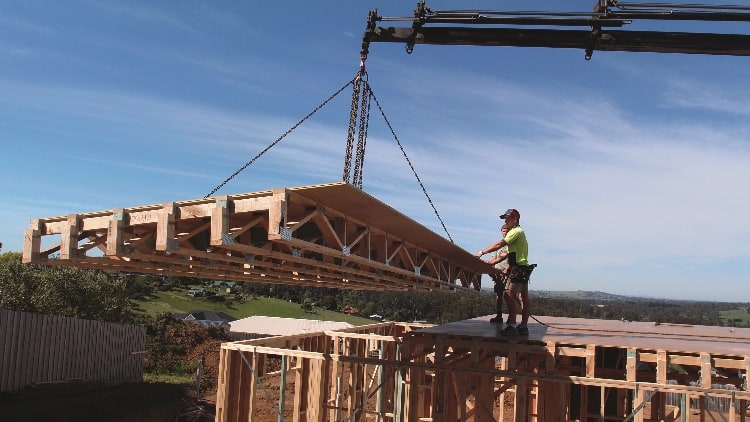Timber building construction projects now underway
Kevin Ezard keeps us up-to-date with some major timber building constructions currently underway around the country.
The tallest timber apartment building in the world was built by Lend Lease in Melbourne’s Docklands four years ago, and since then plans for prefabricated timber and wood residential construction have flourished.
Over 20 major residential projects in mid-rise inner urban projects of 4-8 levels are currently either in planning or under construction around Australia to be built in timber as an alternative to concrete construction.
This trend will undoubtedly continue with timber building height increases in the National Construction Code (NCC) from May 1, with designers and builders eager to explore new possibilities with timber buildings in both conventional timber framing and mass timber including CLT.
Also in May, the annual Frame Australia 2016 conference and exhibition was held with the theme “Building construction with prefabricated timber and engineered wood” where speaker sessions covered timber building systems in construction, with presentations by architects, engineers, developers and builders, along with speakers on engineered timber and prefabrication.
Speakers explained the possibilities for builders to achieve lower construction costs due to faster building times and a range of efficiencies on-site to reduce complexity and simplify the building process.
To demonstrate the remarkable rise in popularity of Cross Laminated Timber (CLT) for tall building construction, the Macarthur Gardens residential project in Campbelltown, NSW is to be Australia’s largest CLT project comprised of 6, 7 and 8 storey apartment buildings as a model for future high-density living developments.

IMAGE 1: Case study for an eight storey apartment building (seven storeys of timber), designed for analysis of building costs in both Cross Laminated Timber (CLT) and timber framing to determine the differences. IMAGE 2: A typical cassette flooring system which is the first step in prefabricated construction for builders to undertake in the low-rise segment of two and three storeys.
The project’s builder, Adam Strong of NSW based Strongbuild, presented on the building project, along with their newly installed fully automated manufacturing facility for prefabrication of buildings using lightweight timber and CLT construction for mid and high-rise developments.
Another recent advance involves Mirvac, one of Australia’s leading property developers, turning to prefab construction methods to dramatically reduce work times among a labour shortage in the building sector, being supplied by the CSR Velocity plant at Ingleburn in Sydney.
Ray Thompson, general manager of innovation & market development at CSR Building Products spoke about CSR Velocity’s production-line manufactured housing with fully closed floor, wall and roof systems, with internal walls and windows, doors and external cladding, plumbing and electrical systems ready for site connection to meet Mirvac’s needs.
Other presenters included Andrew Dunn of the Timber Development Association on the options for structural timber now available as Deemed-to-Satisfy solutions within the new 25m height limit. He also presented a report on cost studies of an eight storey apartment building with seven levels in timber, one designed in CLT and another using the same layout but in timber framing.
A later presentation by Richard Smith, cost planner with MBM Consultancy provided cost comparisons for the same eight storey apartment building compared to a traditional concrete frame structure with analysis of the construction cost differences and savings, along with changes to the design approach and thinking for tall timber framed buildings.
In a complementary presentation “Design of structural connections for mid-rise lightweight timber framed buildings” by Joe Polder of Simpson Strong-Tie North America included structural connections for taller timber buildings requiring large capacity lateral bracing, building overturning resistance, tie down and uplift connections.
At the conference, estimates of market share for prefabricated timber systems for housing and apartment construction ranged from 10-15% in the next decade, which will be a significant opportunity for the design and construction sectors to not only achieve building project benefits, but also improved sustainability to help our environment.
All these presentations and more are available for viewing on the Speaker Sessions page at the Frame Australia website www.frameaustralia.com and you can also register to receive Frame News to keep up with the latest developments leading up to next year’s event.
